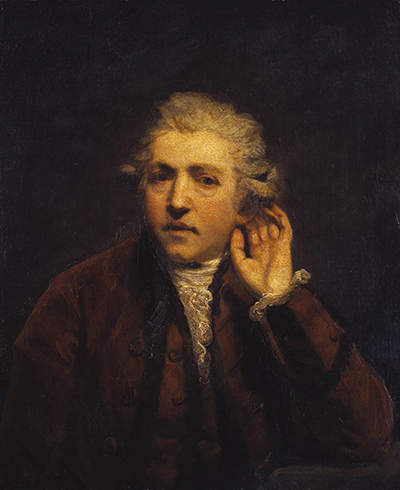 Buy Art Prints Now
Buy Art Prints Nowfrom Amazon
* As an Amazon Associate, and partner with Google Adsense and Ezoic, I earn from qualifying purchases.
A lifetime president and founder of the Royal Academy of Arts, a renowned portrait painter, and a knight by order of King George III, Sir Joshua Reynolds has as much claim to talent as any other painter, yet his discourses on art state the exact opposite as they place hard work and cerebral progress on a pedestal high above any natural predisposition.
Self-Portrait as a Deaf Man, currently stored in the Tate Modern, is one of the numerous self-portraits Reynolds produces. It's an oil on canvas painting of the artist in his later years, after he develops partial deafness due to illness. The subject is shown cupping a hand over his ear in an effort to enhance his hearing. Joshua Reynolds writes that creative innovation is achieved through combination of existing successful ideas. This approach is shown in this self-portrait. At the time, Reynolds is already an established artist, but he opts to display an unusual pose - a practice often used in exercises by student painters - in his refined self-portrait.
In his lectures on art, he presents creative pursuits as difficult, exhausting, and devastating. It is a difficult process, rooted in the study of basics, then other great painters, and finally nature and the inner self. The struggle of the artist to hear and take in his surroundings can be seen as a parallel to the arduous mental effort of art production. Reynolds is an advocate of the Grand Manner style painting, which is inspired by history paintings from the High Renaissance period, and later adopted into portrait painting. Its main ideology promotes poetic idealisation when depicting subjects. The focal point is the majestic atmosphere and the romantic exaggeration of the characters' image.
Obsession with momentous details is not only deemed inessential, but also diminishing to a painting, as the style relies on grandeur and epic proportions. This philosophy is seen at work here, as the focus is the pose, rather than a collection of intricacies. So convinced is Joshua Reynolds of the claim that creative greatness comes from the composition, the overall comprehension, and the feelings the piece portrays that he leaves the painting of the clothes his subjects wear to his proteges, choosing instead to occupy himself with his next endeavour in an endless pilgrimage for perfect art.




